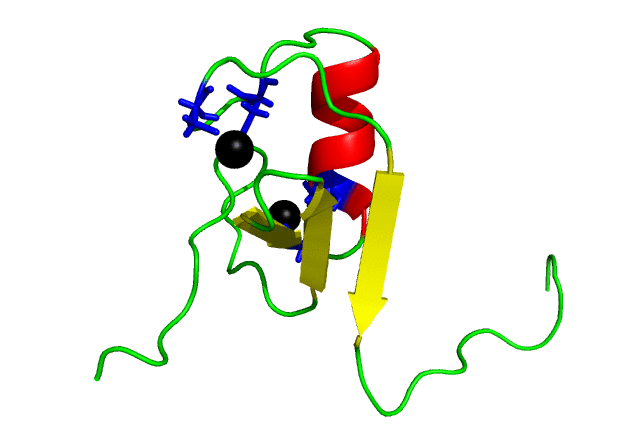You are using an out of date browser. It may not display this or other websites correctly.
You should upgrade or use an alternative browser.
You should upgrade or use an alternative browser.
Session 24 June 2022
- Thread starter Laura
- Start date
it could mean that what is about to unfold on this planet will have dramatic consequences that will be felt everywhere.
No doubt the wedding of Chu and Scottie has a very important symbolism that can be associated with genetic research and religious interpretations to give us a message, which I like to interpret as the imminent UNION/WEDDING of the DNA of eligible humanity (the one dressed for the wedding through the work) with the fourth density vibration.
Thank you for your excellent job Natus Videre
Vinícius
Jedi
yeah, tbh i don't know the author and mentioning yhhw/cabbala left me a bit skeptical but interesting anywaythanks for sharing that link Vinícius.
the article's author initially observes the binary OM, then speculates the M is perhaps mirrored through a vertical, thus making the 0's into 1's and vice versa... which makes the binary letter "I" ...well that opens up a whole other way of looking at the circle for sure, interesting !
other possible interpretations:
a ring
a laurel crown
apocalypse knight's horseshoe the moment he loped by howling yppie-IO
hollenoaea
Jedi
and a new one today "Lay Wood" reminded me so much of the FOTCM sing ... 3 is as 3rd step in personal development is our united being in spirit, which is separated in two here in this plane ... maybe it said that going from 3D to 4D we are getting back to our source where we feel all 3 now interwoven in one ... something like we as a Gods perls on earth learned more about itslef and now we have interwoven that knowledge into our one higher being ... 1+4+7+2+2+2 = 9! And 9 is the number of higher and nonmaterial dimensions ...
You can see the beautifully folded crops in this video too and the surroundings ....


You can see the beautifully folded crops in this video too and the surroundings ....



Attachments
Thank you for sharing that. It is a beautiful crop circle.You can see the beautifully folded crops in this video too and the surroundings
Amazing! I know I should be contributing more but I always feel like someone here has said it better, more clearly, more intelligently… This forum is enlightening and humbling. I Love You Cass and Cass Forum! Thank You all as always!!!
Don’t let that to refrain yourself from posting or commenting, everyone of us has an unique point of view on many subjects, where some can express it better sometimes, others can have inputs that perhaps most of us didn’t consider before. So that’s the positive thing of a network, the bigger and consolidated the better :)
This crop circle looks a bit like celtic art, with their knots. If it is genuine, maybe there's also a little push to look back at what our ancestor's did/were and take a few lessons out of it? The Celts were not perfect but they probably didn't have this whole woke hysteria going onand a new one today "Lay Wood" reminded me so much of the FOTCM sing ... 3 is as 3rd step in personal development is our united being in spirit, which is separated in two here in this plane ... maybe it said that going from 3D to 4D we are getting back to our source where we feel all 3 now interwoven in one ... something like we as a Gods perls on earth learned more about itslef and now we have interwoven that knowledge into our one higher being ... 1+4+7+2+2+2 = 9! And 9 is the number of higher and nonmaterial dimensions ...
You can see the beautifully folded crops in this video too and the surroundings ....
Below is a photo of celtic art that looks like the crop circle. FWIW.
Attachments
Brilliant work. Many thanks for continuing.Thank you @Graby84 for taking the time to generate the DNA sequences.
We may be close to solving the puzzle!
Lovely Message
As we have already established, "Love" is encoded in binary:
View attachment 60895
DNA Coding
If we set T=00, A=01, C=10, and G=11 as the encoding scheme for the four nucleobases in DNA, we obtain the following:
View attachment 60896
This is the first sequence/permutation posted by Graby84!
I searched for the nucleotide sequence ACGGAGACACAA, which is the part after the "mysterious" line, using Nucleotide BLAST to see if the sequence matches anything in particular in the human genome.
View attachment 60897
I started shedding tears of joy when the search results returned:
View attachment 60898
Homo Sapiens RING Finger Protein!
View attachment 60899
Cassiopaea... Love... DNA... Wedding... Ring... Finger...
We are definitely onto something here!

RING finger domain - Wikipedia
en.wikipedia.org
View attachment 60900
The Role of the Transmembrane RING Finger Proteins in Cellular and Organelle Function - PMC
A large number of RING finger (RNF) proteins are present in eukaryotic cells and the majority of them are believed to act as E3 ubiquitin ligases. In humans, 49 RNF proteins are predicted to contain transmembrane domains, several of which are ...www.ncbi.nlm.nih.gov
Possible Interpretations
Three different bones pass through the ring before the latter anchors itself at the end of the third bone (proximal phalange). Are we on the verge of overcoming 3D limitations as we move on to 4D?
View attachment 60903
Since "many proteins containing a RING finger play a key role in the ubiquitination pathway," it could mean that what is about to unfold on this planet will have dramatic consequences that will be felt everywhere.
A Wedding is a very important event which marks the beginning of new stage in one's life. The letter W is the union of two V's, such that there is a path from one V to the other and vice versa. Two V's meet at a point to create W!
RING... Really Interesting New Gene...
I simply had a feeling, a resonance after reading carefully the session. I started reading Cassiopaeans and Laura's work not more than half a year ago. I cannot say I have developed a lot in terms of soul, my higher self or even the knowledge about the "true world". I'm still struggling with a lot of things in my personal life, including lack of time (yes I know there is no Time, but this applies to temporarily occupied density
 ) or will to apply appropriate changes in my life, but this was something that hit back of my head that needs to be done.
) or will to apply appropriate changes in my life, but this was something that hit back of my head that needs to be done.I knew I'm not educated in genetics area, have only the basics that are taught in high school. I was about to further educate myself in terms of DNA, mRNA and coding/decoding (already spent few hours recalling the basics), but decided to share first step with community here. Was hoping also to find some system that will allow what you (@Natus Videre) did with Nucleotide BLAST, but simply lacked knowledge about such systems.
About the first permutation, I simply started with this order due to first educational site I have read about DNA molecules
About:
Since "many proteins containing a RING finger play a key role in the ubiquitination pathway," it could mean that what is about to unfold on this planet will have dramatic consequences that will be felt everywhere.
What is puzzling, a lot of esoteric sources, for example Christian source Trevignano Romano Revelations (no idea if this is the 6D channeling or simply 4/6D deception), but does mention same thing... about global awakening of consciousness or rather conscience. But definitely there's something onto it. Maybe it is a part of The Wave (when enough people start/or actually do awaken), and my guess is that it may happen the same way as the event described as "Fall of Eden" and loosing DNA strands (was somewhere in the old sessions, probably from 1994, as those I've read as a whole). Maybe... just maybe it's going to be the opposite and thus will affect all humans the same moment "everywhere"...
Some more words about hunches... I had one more with the "power code" (353535) in relation to DNA and what @John G related to:
I've educated myself enough to understand the 3 prime and 5 prime ends and the basics of molecules construction. Have no idea as of yet how this might be connected, because didn't have much time to deepen this topic, but this gives me no peace... lack of free time is crucial here (It's really hard to read The Wave, follow thread topics, work and take care of children). Will do eventually, someday
 ...
...Thanks for hearing/reading me.
Cheers, Thomas.
G
goggles paisano
Guest
@Graby84 and @Natus Videre ... the most recent circle, shared by @Puma on tuesday, shown below.
in binary, starting from lower left, clock wise, to lower right, gives 0100111 - 01101101 which gives us OM
however, looking at your dna code i came up with ATGG - ACGA
what do you think this means ? the centre circle is a weave, maybe a clue

in binary, starting from lower left, clock wise, to lower right, gives 0100111 - 01101101 which gives us OM
however, looking at your dna code i came up with ATGG - ACGA
what do you think this means ? the centre circle is a weave, maybe a clue

United Gnosis
Jedi Council Member
We may be close to solving the puzzle!
Lovely Message
As we have already established, "Love" is encoded in binary:
View attachment 60895
DNA Coding
If we set T=00, A=01, C=10, and G=11 as the encoding scheme for the four nucleobases in DNA, we obtain the following:
View attachment 60896
This is the first sequence/permutation posted by Graby84!
I searched for the nucleotide sequence ACGGAGACACAA, which is the part after the "mysterious" line, using Nucleotide BLAST to see if the sequence matches anything in particular in the human genome.
View attachment 60897
I started shedding tears of joy when the search results returned:
View attachment 60898
Homo Sapiens RING Finger Protein!
View attachment 60899
Cassiopaea... Love... DNA... Wedding... Ring... Finger...
We are definitely onto something here!

RING finger domain - Wikipedia
en.wikipedia.org
View attachment 60900
The Role of the Transmembrane RING Finger Proteins in Cellular and Organelle Function - PMC
A large number of RING finger (RNF) proteins are present in eukaryotic cells and the majority of them are believed to act as E3 ubiquitin ligases. In humans, 49 RNF proteins are predicted to contain transmembrane domains, several of which are ...www.ncbi.nlm.nih.gov
Possible Interpretations
Three different bones pass through the ring before the latter anchors itself at the end of the third bone (proximal phalange). Are we on the verge of overcoming 3D limitations as we move on to 4D?
View attachment 60903
Since "many proteins containing a RING finger play a key role in the ubiquitination pathway," it could mean that what is about to unfold on this planet will have dramatic consequences that will be felt everywhere.
A Wedding is a very important event which marks the beginning of new stage in one's life. The letter W is the union of two V's, such that there is a path from one V to the other and vice versa. Two V's meet at a point to create W!
RING... Really Interesting New Gene...
Those are interesting connections, but doesn't this seem arbitrary? I'm curious why the English signifier 'love' should be selected to translate into genetic code, rather than French, Latin, Hebrew, Sanskrit? And if the word love should be converted by using modern ASCII code for each letter, does that mean that if we find a significant gene that translates to the ASCII sequence ÿ@δ╕, then does that become some kind of symbolically significant power word?
It looked like you made some interesting synchronistic observations, but I'm sorry, it was hard to keep taking it seriously when that fundamental step seemed so arbitrary.
John G
The Living Force
"English" made sense for the two getting married and is kind of the default language for the channeling/forum anyways. I sort of had a competing theory and I will totally admit this is way more Cs-like for that day than what I mentioned. I was mainly answering for the DNA equivalent of a "word" but I had a theory related to that too. If this isn't what the Cs had in mind, I could easily see them saying they wish they had thought of it. It's just way too fitting for that day in a what's really important kind of way.Those are interesting connections, but doesn't this seem arbitrary? I'm curious why the English signifier 'love' should be selected to translate into genetic code, rather than French, Latin, Hebrew, Sanskrit? And if the word love should be converted by using modern ASCII code for each letter, does that mean that if we find a significant gene that translates to the ASCII sequence ÿ@δ╕, then does that become some kind of symbolically significant power word?
It looked like you made some interesting synchronistic observations, but I'm sorry, it was hard to keep taking it seriously when that fundamental step seemed so arbitrary.
Vinícius
Jedi
3 circles for the 3rd knight, knew it!and a new one today "Lay Wood" reminded me so much of the FOTCM sing ... 3 is as 3rd step in personal development is our united being in spirit, which is separated in two here in this plane ... maybe it said that going from 3D to 4D we are getting back to our source where we feel all 3 now interwoven in one ... something like we as a Gods perls on earth learned more about itslef and now we have interwoven that knowledge into our one higher being ... 1+4+7+2+2+2 = 9! And 9 is the number of higher and nonmaterial dimensions ...
You can see the beautifully folded crops in this video too and the surroundings ....
and a new one today "Lay Wood" reminded me so much of the FOTCM sing ... 3 is as 3rd step in personal development is our united being in spirit, which is separated in two here in this plane ... maybe it said that going from 3D to 4D we are getting back to our source where we feel all 3 now interwoven in one ... something like we as a Gods perls on earth learned more about itslef and now we have interwoven that knowledge into our one higher being ... 1+4+7+2+2+2 = 9! And 9 is the number of higher and nonmaterial dimensions ...
You can see the beautifully folded crops in this video too and the surroundings ....
As the Cassiopaea constellation crop circle has shown from the great digging done here, these symbols can and do sometimes hold several layers of meaning simultaneously. This new one, thanks to hollenoaea's side by side posting of the FOTCM symbol, looks very much like an expansion of the FOTCM design. If its the real deal, it may not have been constructed to suggest that of course, but one possibility is that this circle is suggesting some kind of growth to the mix, or an added element maybe like the 'third eye' or pineal gland; psychic up-link.
Even more so though, it reminds me of 'The Law of Three' in the 4th Way literature - and what the C's have said in prior sessions about finding the 3 meanings in things.
The following section is from the Paleochristianity wiki PDF which is chock full of concise definitions of relevent terms and concepts. https://paleochristianity.org/documents/FOTCM_Casswiki.pdf
Maybe the section below holds some clues. But even if it doesn't, there seems to be a whole lot here that has much bearing on where we are, and what we're doing:
Law of Three
The Law of Three is fundamental to Fourth Way cosmology, where each phenomenon springs from the interaction of three forces. The idea is also central to the Cassiopaean Experiment, where context or consciousness determines alignment in relation to the fundamental duality of the cosmos.
Cosmology
In Fourth Way cosmology, the fundamental law is called the Law of Three, or the law of the three principles or the three forces. According to this law, every phenomenon – from the cosmic to the sub-atomic – is the result of the converging action of three forces:
• The active force, also called the Holy Affirming.
• The passive force, also called the Holy Denying.
• The neutralizing force, also called the Holy Reconciling.
The human mind is geared towards thinking in terms of a single force or at most two. People are generally unaware of the ’third force’ or ’third principle’ in a given phenomenon or situation, and as such they are not able to form an objective understanding of it. Rigid ’formatory’ or ’mechanical’ thinking tends to only see ’yes’ and ’no’, ’true’ and ’false’, or ’good’ and ’bad’. Introducing the notion of third force as a representative of context or consciousness can broaden the mental process.
Still, we may not give fixed meanings to the three forces. The three forces are active, passive and neutralizing only with respect to the phenomenon at hand. Thus one and the same force may play very different roles in different phenomena and no phenomenon is isolated. The Law of Three deals with the single occurrence, but no single occurrence occurs that is not part of some process. The Law of Seven deals with how a process moves through distinct stages in time.
George Gurdjieff describes the Law of Three and the question of the third force as follows52:
Contemporary thought realizes the existence of two forces and the necessity of these two forces for the production of a phenomenon: force and resistance, positive and negative magnetism, positive and negative electricity, male and female cells, and so on. But it does not observe even these two forces always and everywhere. No question has ever been raised as to the third, or if it has been raised it has scarcely been heard.
According to real, exact knowledge, one force, or two forces, can never produce a phe-nomenon. The presence of a third force is necessary, for it is only with the help of a third force that the first two can produce what may be called a phenomenon, no matter in what sphere.
The teaching of the three forces is at the root of all ancient systems. The first force may be called active or positive; the second, passive or negative; the third, neutralizing. But these are merely names, for in reality all three forces are equally active and appear as active, passive, and neutralizing, only at their meeting points, that is to say, only in relation to one another at a given moment. The first two forces are more or less comprehensible to man and the third may sometimes be discovered either at the point of application of the forces, or in the ’medium,’ or in the ’result.’ But, speaking in general, the third force is not easily accessible to direct observation and understanding. The reason for this is to be found in the functional limitations of man’s ordinary psychological activity and in the fundamental categories of our perception of the phenomenal world, that is, in our sensation of space and time resulting from these limitations. People cannot perceive and observe the third force directly any more than they can spatially perceive the ’fourth dimension.’
Gurdjieff goes on to describe the Ray of Creation, wherein the three forces of the Absolute meet, creating worlds where the three forces no longer act as one. In a repeating process, the three forces then meet, giving rise to the next order of worlds, wherein the number of forces is doubled. This process proceeds to create a series of seven cosmoses (beginning with the Absolute as the first), where the number of forces acting on a cosmos is also the number of laws to which it is subject. The more laws, the more mechanical the worlds of a cosmos.
Boris Mouravieff, in his Gnosis trilogy, also relates the three forces to the creation of the world. Emerging with the creation of the Universe, each force represents one of the three conditions conceived by the non-manifest Divinity before the creation of the Universe:
• The passive force corresponds to the static condition.
• The active force corresponds to the dynamic condition.
• The neutralizing force ensures the maintenance or equilibrium of creation.
In the first volume of Gnosis, Mouravieff writes:
Life in the universe is nothing but a perpetual process of creation in every domain, on every plane, and at every step. In addition, for every event, large or small, important or insignificant, an act analogous to the First Creation of the entire Universe is produced, with all proportions maintained. In this act, the three forces act as a replica of the three conditions which conceived the created universe before the manifestation.
Examples
The formulation ’The higher blends with the lower in order to actualise the middle’ , is clear in the following: the sperm merges with the ovum to create the embryo or alternatively the sexual drive is inhibited, giving rise to ‘sublimation’ or ‘complex’, a teacher relates with a pupil ensuring transmission, etc.
In other examples, the third force is a catalyst or arbiter which determines the outcome of the encounter of the active and passive forces. For example, flour and water become bread only when bonded by fire, plaintiff and defendant have their case resolved only through a judge, the soul in potential asserts itself over the body through the application of the Work.
Work on the self
The Law of Three is of practical importance in self-Work. By studying onseself, one can learn to distinguish the three forces in the functioning of one’s machine. One can also recognize the absense of the third force by inertia in one’s life – by observing that one is stuck. Such observation shows the need for a new element which can enter as the third force. It could be knowledge, it could be work on one’s body or emotions; or, it could be that the need to ”pay all in advance” is not being fulfilled, and must be before further progress is possible.
George Gurdjieff describes self-study and self-Work in relation to the Law of Three as follows:
[...] by studying himself, the manifestations of his thought, consciousness, activity—his habits, his desires, and so on—man may learn to observe and to see in himself the action of the three forces. Let us suppose, for instance, that a man wants to work on himself in order to change certain of his characteristics, to attain a higher level of being. His desire, his initiative, is the active force. The inertia of all his habitual psychological life which shows opposition to his initiative will be the passive or the negative force. The two forces will either counterbalance one another, or one will completely conquer the other, but, at the same time, it will become too weak for any further action. Thus the two forces will, as it were, revolve one around the other, one absorbing the other and producing no result whatever. This may continue for a lifetime. A man may feel desire and initiative. But all this initiative may be absorbed in overcoming the habitual inertia of life, leaving nothing for the purpose towards which the initiative ought to be directed. And so it may go on until the third force makes its appearance, in the form, for instance, of new knowledge, showing at once the advantage or the necessity of work on oneself and, in this way, supporting and strengthening the initiative. Then the initiative, with the support of this third force, may conquer inertia and the man becomes active in the desired direction.
Examples of the action of the three forces, and the moments of entry of the third force, may be discovered in all manifestations of our psychic life, in all phenomena of the life of human communities and of humanity as a whole, and in all the phenomena of nature around us.
But at the beginning it is enough to understand the general principle: every phenomenon, of whatever magnitude it may be, is inevitably the manifestation of three forces; one or two forces cannot produce a phenomenon, and if we observe a stoppage in anything, or an endless hesitation at the same place, we can say that, at the given place, the third force is lacking. In trying to understand this it must be remembered at the same time that people cannot observe phenomena as manifestations of three forces because we cannot observe the objective world in our subjective states of consciousness. And in the subjectively observed phenomenal world we see in phenomena only the manifestation of one or two forces. If we could see the manifestation of three forces in every action, we should then see the world as it is (things in themselves). Only it must here be remembered that a phenomenon which appears to be simple may actually be very complicated, that is, it may be a very complex combination of trinities. But we know that we cannot observe the world as it is and this should help us to understand why we cannot see the third force. The third force is a property of the real world. The subjective or phenomenal world of our observation is only relatively real, at any rate it is not complete.
The Cassiopaeans stress the need for giving back in order to receive. Taking without giving eventually results in a blockage, regardless of the amount of energy expended in other ways. Relating this to the above quote, it is an instance of the third force being missing. Giving back can take many forms – it depends on what is asked for. In the context of this group, a large part is helping out with our common projects – e.g. discussing and sharing information on the Cassiopaea Forum, editing Signs of the Times to help keep it active as a lighthouse for the world, contributing to other projects – or helping to provide the means which others can use to do so. It can also be a matter of dedication – of not being able to receive more until one puts in practice, or sincerely utilizes, what one has already been given.
The wiki entry on RING finger domains mentions zinc finger. Apparently zinc finger is also used as a gene editing tool like CRISPR. The following article lists the pros and cons of each.

 www.news-medical.net
www.news-medical.net
Just for a bit of fun, I was wondering what other molecules were connected with rings and fingers. The search on oxytocin, the love hormone returned this, the love finger ring:



CRISPR: The End for Zinc Fingers?
The past decade has brought rapid and significant innovations in genome-editing techniques. For the first time researchers have the opportunity to manipulate essentially any gene in a plethora of cells and organisms, using targeted nucleases that were designed for sequence-specific binding of...
Just for a bit of fun, I was wondering what other molecules were connected with rings and fingers. The search on oxytocin, the love hormone returned this, the love finger ring:





